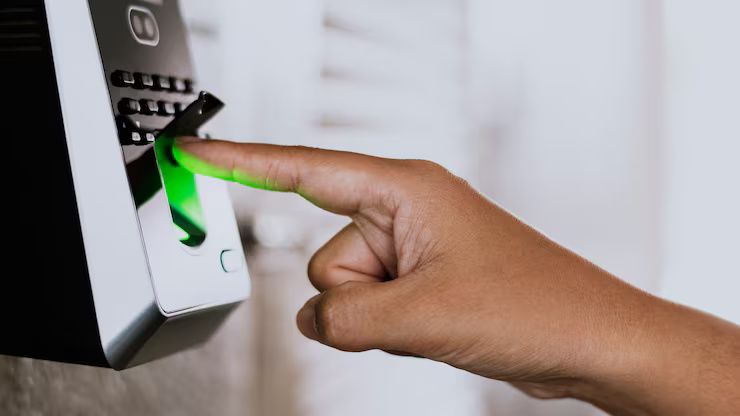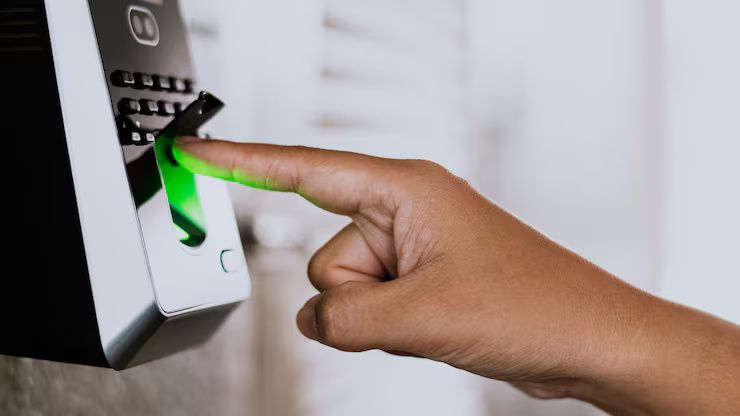Electronic locks, also known as digital or smart locks, are security devices that use electronic systems instead of traditional keys to grant access. They can be unlocked through PIN codes, biometric data, smartphone apps, RFID cards, or remote access features.
These locks were initially developed for high-security areas in commercial and institutional settings, but they have since become more common in residential homes and small offices. Their purpose is to offer greater control, convenience, and customization compared to mechanical locks.
In today's connected world, where automation and digital convenience are becoming standard, electronic locks are part of a broader shift toward smart living and working environments.

Why electronic locks matter today
As digital technology becomes embedded in everyday life, physical security has also evolved. Electronic locks address the increasing need for more flexible, traceable, and secure access systems.
Who is affected?
-
Homeowners seeking smart home features
-
Office managers and facility supervisors
-
Property managers and landlords
-
Schools, clinics, and government buildings
Problems solved by electronic locks:
-
Lost keys: Eliminates the need for physical keys, reducing replacement costs and inconvenience.
-
Unauthorized access: Some systems provide access logs and can restrict usage to specific users or times.
-
Access control: Permissions can be customized and changed instantly without changing hardware.
-
Remote access: Allows doors to be locked or unlocked from a distance, useful in emergencies or for deliveries.
-
Security breaches: Advanced features like auto-locking and alerts improve situational awareness.
Recent updates in electronic lock technology (2024–2025)
In the past year, there have been several developments in the electronic lock industry:
| Trend | Description |
|---|---|
| Integration with smart ecosystems | Many new locks now integrate seamlessly with systems like Amazon Alexa, Google Home, and Apple HomeKit for full automation. |
| Biometric enhancements | Fingerprint and facial recognition technologies have become faster and more accurate, as seen in models released in early 2025. |
| Cloud-based access control | Cloud-managed locks now offer real-time monitoring and centralized control for multiple sites, especially popular in coworking spaces. |
| Energy-efficient designs | Several 2024–2025 models feature longer-lasting batteries and solar charging panels for sustainability. |
| Improved cybersecurity features | In response to hacking concerns, newer locks use encrypted communication protocols and regular firmware updates. |
In March 2025, Yale introduced its next-gen Keyless Connected Lock, which includes tamper alerts and offline access options. Similarly, Schlage released a firmware upgrade in April 2025 for its Encode Plus models to improve Apple Wallet integration.
How laws and policies influence electronic lock usage
The use of electronic locks is affected by various national and regional regulations, particularly in terms of privacy, accessibility, and landlord-tenant responsibilities.
Here are examples of how policies apply:
| Policy / Regulation | Region | Impact on Electronic Locks |
|---|---|---|
| GDPR (General Data Protection Regulation) | EU | Requires user data collected by locks (e.g., access logs, biometric data) to be stored and processed securely. |
| Americans with Disabilities Act (ADA) | USA | Mandates accessible design for electronic locks in public buildings and shared spaces. |
| Local rental laws | Varies by city/country | Some cities require landlords to provide tenants with access options that do not depend solely on mobile phones or apps. |
| Consumer Protection Acts | Global | Enforce requirements for transparency in user data use and hardware reliability. |
In the U.S., several states including California have introduced legislation requiring strong password defaults and encryption for all connected devices sold to consumers, including smart locks.
Tools and resources to support your use of electronic locks
Choosing and managing electronic locks is easier with the help of tools and services. Here are a few helpful options:
Lock Management Apps:
-
August App – Allows users to control August locks, manage guest access, and view activity logs.
-
Yale Access App – Works with Yale smart locks for remote access and voice control.
-
Schlage Home App – Offers real-time alerts and setup for Schlage Encode locks.
Comparison Tools:
-
Smart Lock Finder (via Consumer Reports) – A tool to compare lock features by brand, price, and user ratings.
-
Lockly Product Selector – An online quiz to help match features with personal use cases.
Installation Support:
-
YouTube Tutorials – Detailed, brand-specific setup videos by certified locksmiths.
-
Manufacturer’s Installation Guides – Downloadable PDFs with step-by-step instructions (available on official websites).
Security and Compliance Checklists:
-
Cybersecurity Best Practices for IoT Devices (by NIST)
-
Home Security Audit Checklist – Used by local police or insurance companies to assess residential vulnerabilities.
Frequently Asked Questions
1. Are electronic locks more secure than traditional locks?
Electronic locks offer enhanced features like access tracking, encryption, and automatic locking. However, their security depends on proper setup, including strong PINs, regular software updates, and reliable brands. Physical security should also be considered (e.g., door quality).
2. Do electronic locks work during power outages?
Most battery-powered electronic locks continue to operate during power failures. Some models include manual key overrides or backup power terminals. Always check the specific model's backup options.
3. Can I use electronic locks without a smartphone?
Yes, many locks support keypad entry, RFID cards, or even biometrics, making them usable without a phone. Some allow offline programming via admin codes.
4. Are electronic locks suitable for rental properties?
Yes, they are popular in short- and long-term rentals. Landlords can generate temporary codes or access rights for tenants and revoke them after checkout, improving flexibility and reducing key management.
5. How long do the batteries in electronic locks last?
Battery life varies by model and usage but typically ranges from 6 months to 2 years. Most locks send low-battery alerts, and some have emergency power features using a USB port or backup battery pack.
Summary table: Comparing common types of electronic locks
| Lock Type | Access Method | Suitable For | Pros | Cons |
|---|---|---|---|---|
| Keypad Lock | PIN code | Homes, offices | Simple, no app needed | PINs can be guessed or shared |
| Biometric Lock | Fingerprint/face | High-security areas | Fast, personalized | More expensive, privacy concerns |
| Bluetooth Lock | Smartphone app | Residential use | Convenient, supports remote access | Battery drain, phone dependence |
| Wi-Fi Connected Lock | Cloud control | Offices, smart homes | Real-time access logs, remote management | Needs internet, higher cost |
| RFID Lock | Keycard/tag | Hotels, rentals | Quick and contactless | Tags may be lost or copied |
Final thoughts
Electronic locks provide a modern alternative to traditional locking systems, offering greater control, customization, and convenience. While they are not without limitations, their integration into homes and workplaces is growing due to their adaptability and functionality.
As technology advances, users must also be aware of how to maintain the security and privacy of these devices. Staying informed about legal requirements, selecting trusted brands, and using available tools can help ensure that electronic locks serve their purpose effectively—keeping people and property safe in a digital world.

